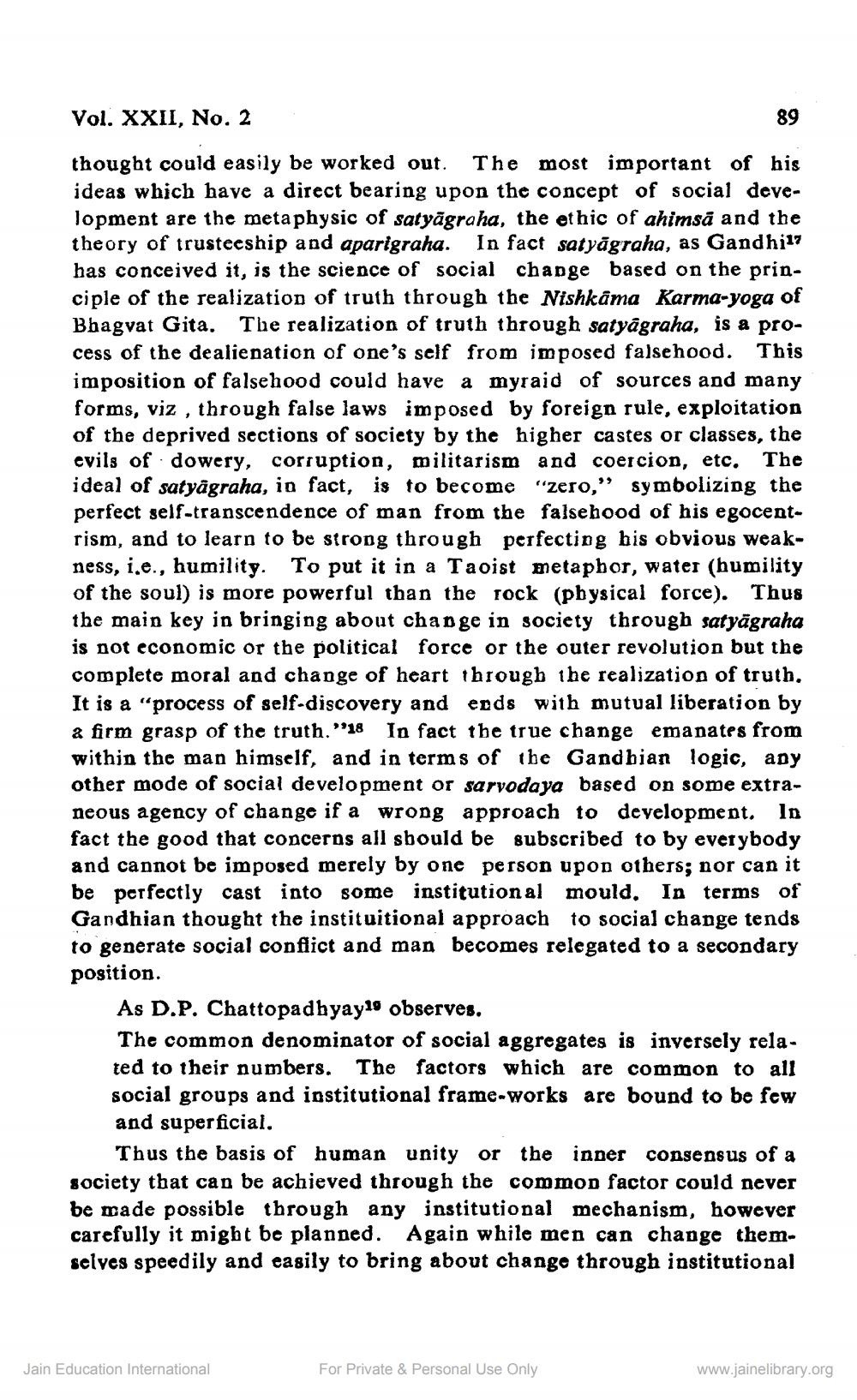________________
Vol. XXII, No. 2
thought could easily be worked out. The most important of his ideas which have a direct bearing upon the concept of social development are the metaphysic of satyāgraha, the ethic of ahimsā and the theory of trustecship and aparigraha. In fact satyagraha, as Gandhi17 has conceived it, is the science of social change based on the principle of the realization of truth through the Nishkâma Karma-yoga of Bhagvat Gita. The realization of truth through satyagraha, is a process of the dealienation of one's self from imposed falsehood. This imposition of falsehood could have a myraid of sources and many forms, viz , through false laws imposed by foreign rule, exploitation of the deprived sections of society by the higher castes or classes, the evils of dowery, corruption, militarism and coercion, etc. The ideal of satyagraha, in fact, is to become "zero," symbolizing the perfect self-transcendence of man from the falsehood of his egocentrism, and to learn to be strong through perfecting bis obvious weakness, i.e., humility. To put it in a Taoist metaphor, water (humility of the soul) is more powerful than the rock (physical force). Thus the main key in bringing about change in society through satyägraha is not economic or the political force or the outer revolution but the complete moral and change of heart through the realization of truth, It is a “process of self-discovery and ends with mutual liberation by a firm grasp of the truth."18 In fact the true change emanates from within the man himself, and in terms of the Gandbian logic, apy other mode of social development or sarvodaya based on some extraneous agency of change if a wrong approach to development. In fact the good that concerns all sbould be subscribed to by everybody and cannot be imposed merely by one person upon others; nor can it be perfectly cast into some institutional mould. In terms of Gandhian thought the instituitional approach to social change tends to generate social conflict and man becomes relegated to a secondary position.
As D.P. Chattopadhyayıs observes. The common denominator of social aggregates is inversely related to their numbers. The factors which are common to all social groups and iostitutional frame-works are bound to be few and superficial.
Thus the basis of human unity or the inner consensus of a society that can be achieved through the common factor could never be made possible through any institutional mechanism, however carefully it might be planned. Again while men can change themselves speedily and easily to bring about change through institutional
Jain Education International
For Private & Personal Use Only
www.jainelibrary.org




